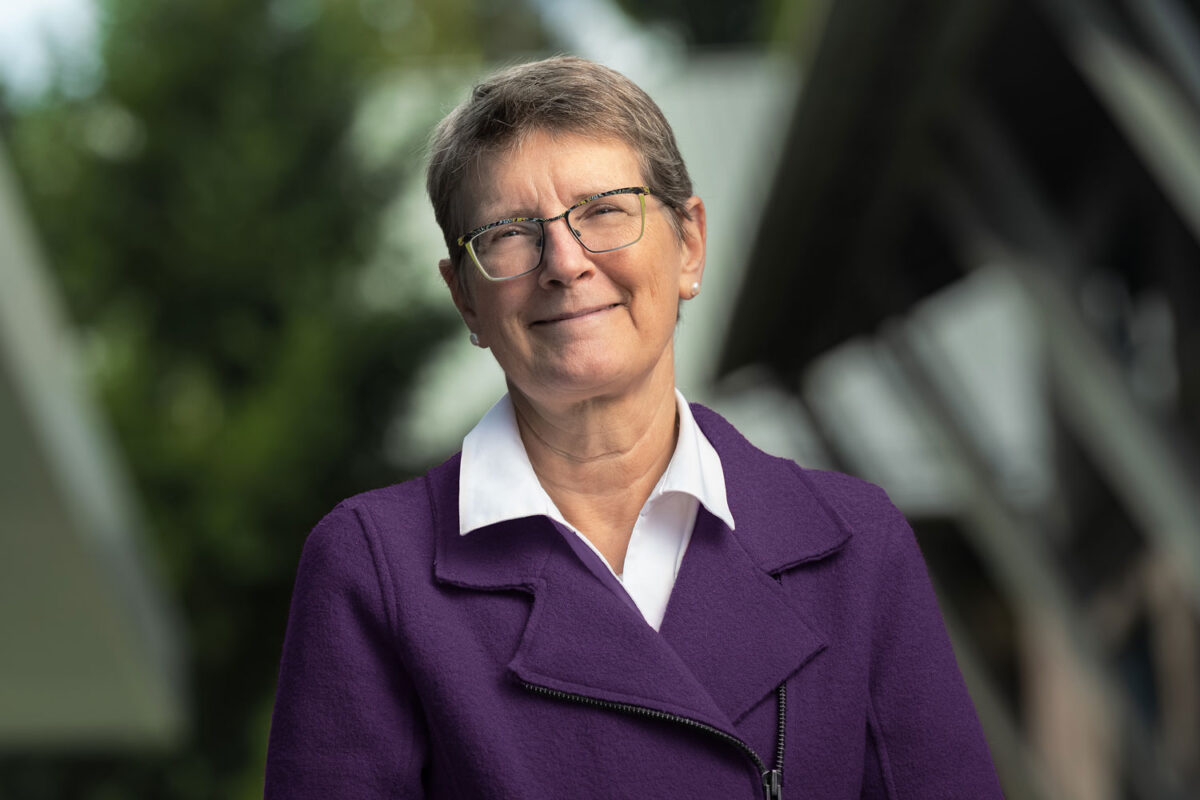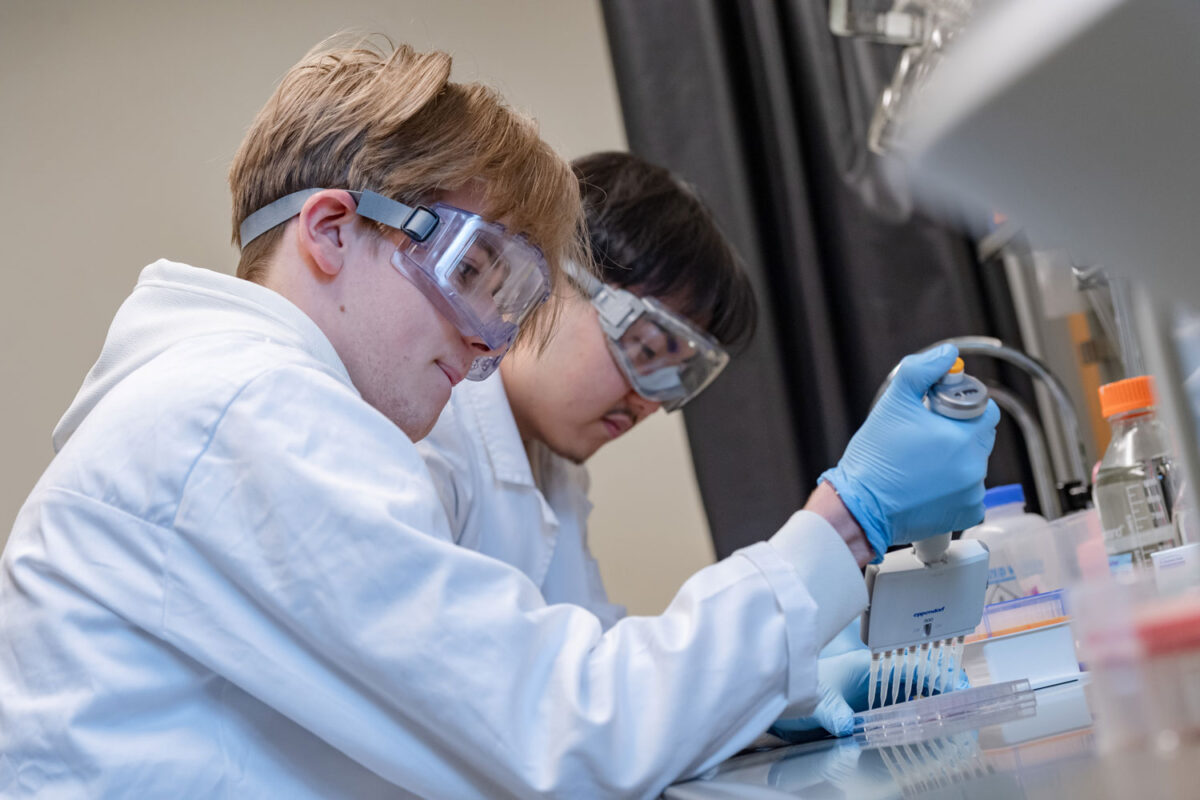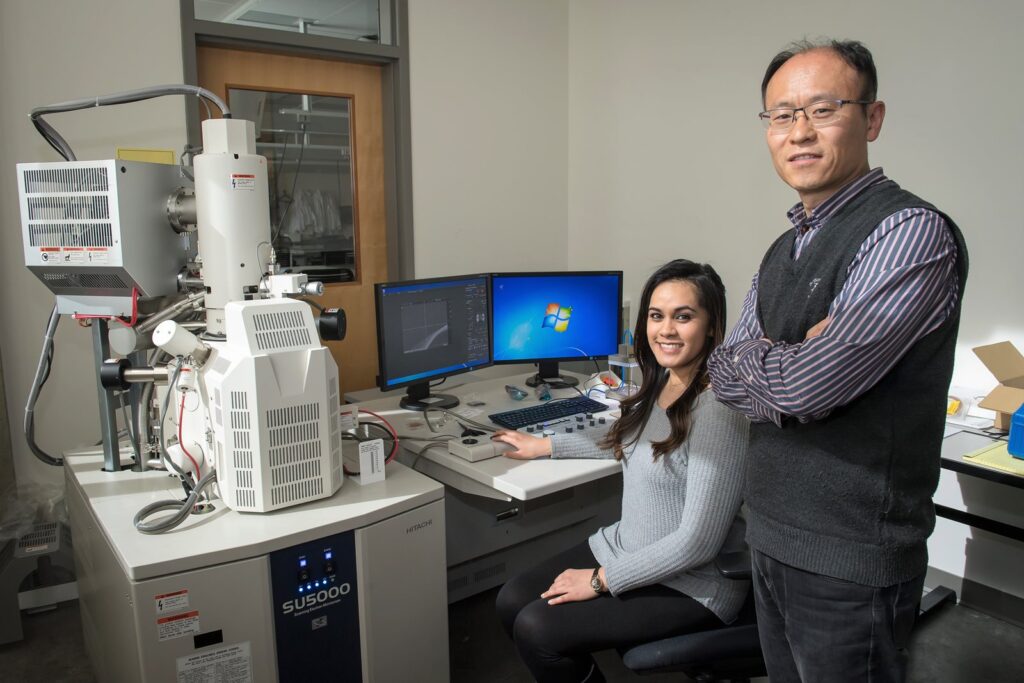
By Douglas Esser
Malia Steward, a graduate student in electrical engineering, has been a research assistant with Seungkeun Choi for nearly four years. Now she has a powerful new tool to focus on their research to develop organic solar cells.
Steward is one of the first persons trained to use the new scanning electron microscope, which was installed in March in Discovery Hall. It was acquired with a $460,000 National Science Foundation grant to support University of Washington Bothell research in mechanical and electrical engineering, biomedical materials and biology.
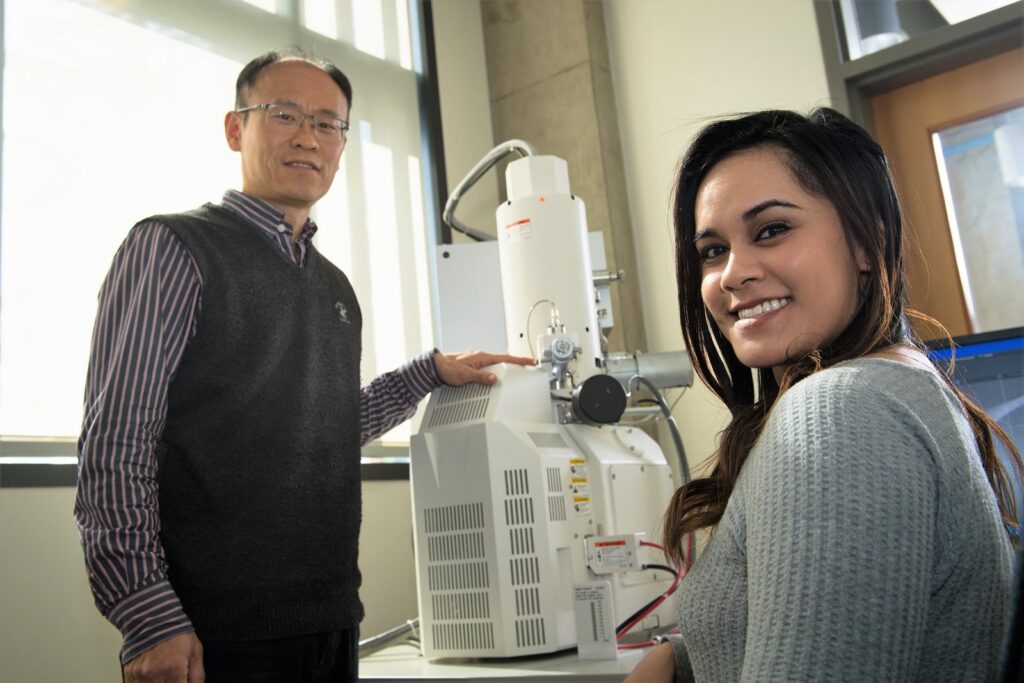
Choi, an assistant professor in electrical engineering in the School of Science, Technology, Engineering & Mathematics, is researching organic (or carbon-based) solar cells. They would be lighter, cheaper and more environmentally friendly than the silicon-based solar cells used in rooftop panels. An organic solar panel could be flexible and curve. It also might be transparent, so that it could be used on a window, Steward said.
The technology has been around for a while and has been successfully implemented in OLED (organic light-emitting diode) televisions, known for their curved screens and sharp colors. But organic solar cells still need to be perfected. Currently, their energy production is low. They are sensitive to humidity and may last only a few days, while silicon solar cells last 20-30 years. Despite the problems, the future for this technology is bright, Choi said.
“I’ve been working on way to improve the power-conversion efficiency,” trying different materials and electrodes, Steward said.
With the scanning electron microscope, Steward can now look at the wrinkled surface of organic solar cells on a nanometer scale and try different coatings. (A nanometer is a billionth of a meter; a piece of paper is about 100,000 nanometers thick.) Images appear on a computer screen connected to the microscope, a Hitachi SU5000.
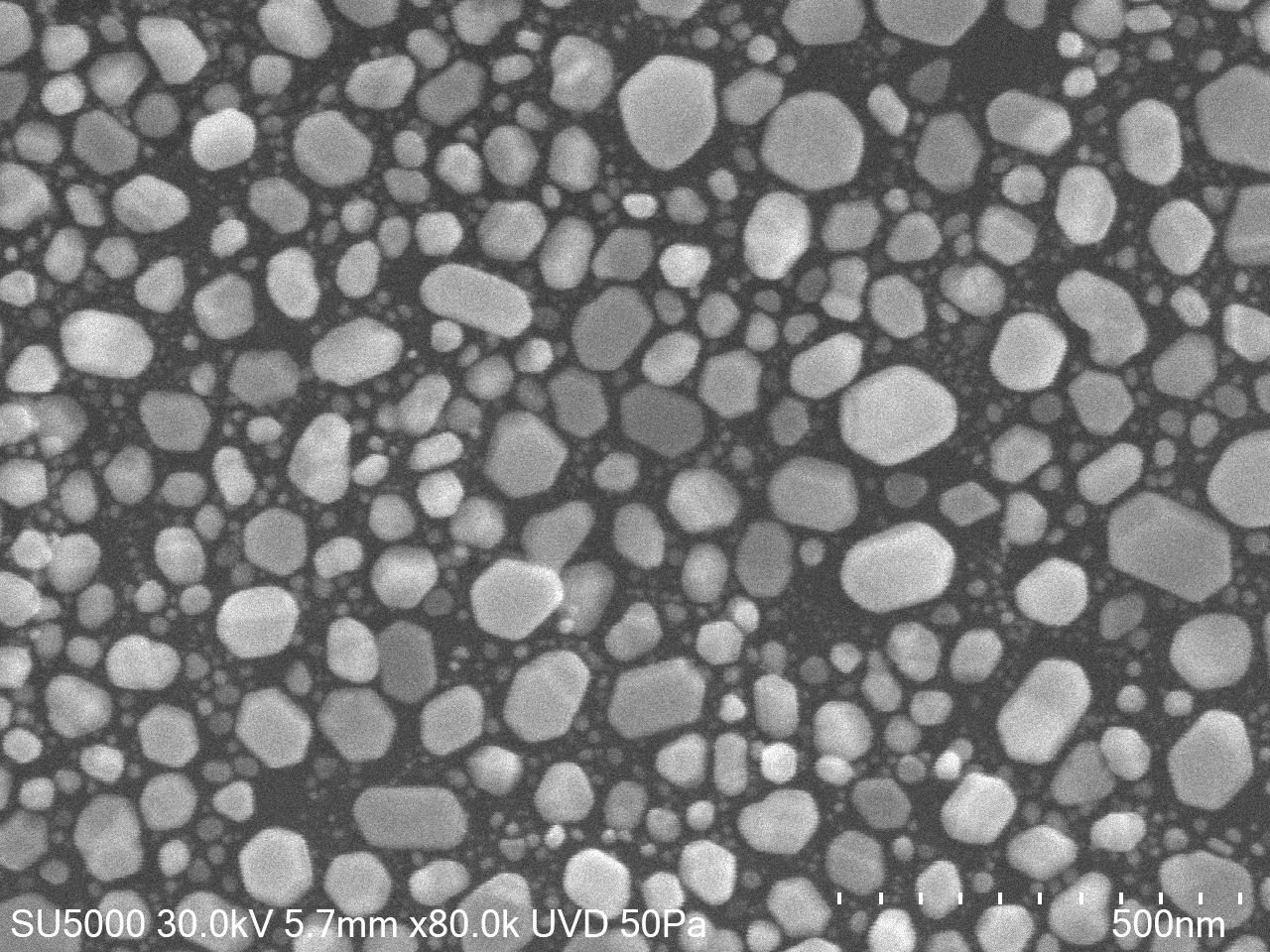
Image courtesy of Seungkeun Choi
An image from the new microscope at left shows gold grains on a carbon tape, which make a good practice sample, Choi said. The image shows a scale bar of 500 nanometers.
“It’s definitely a great opportunity to have this kind of hands-on experience. My research grew from undergraduate to graduate studies,” said Steward, who believes the knowledge may help her in landing a research job after graduating next fall and eventually in pursuing a doctorate.
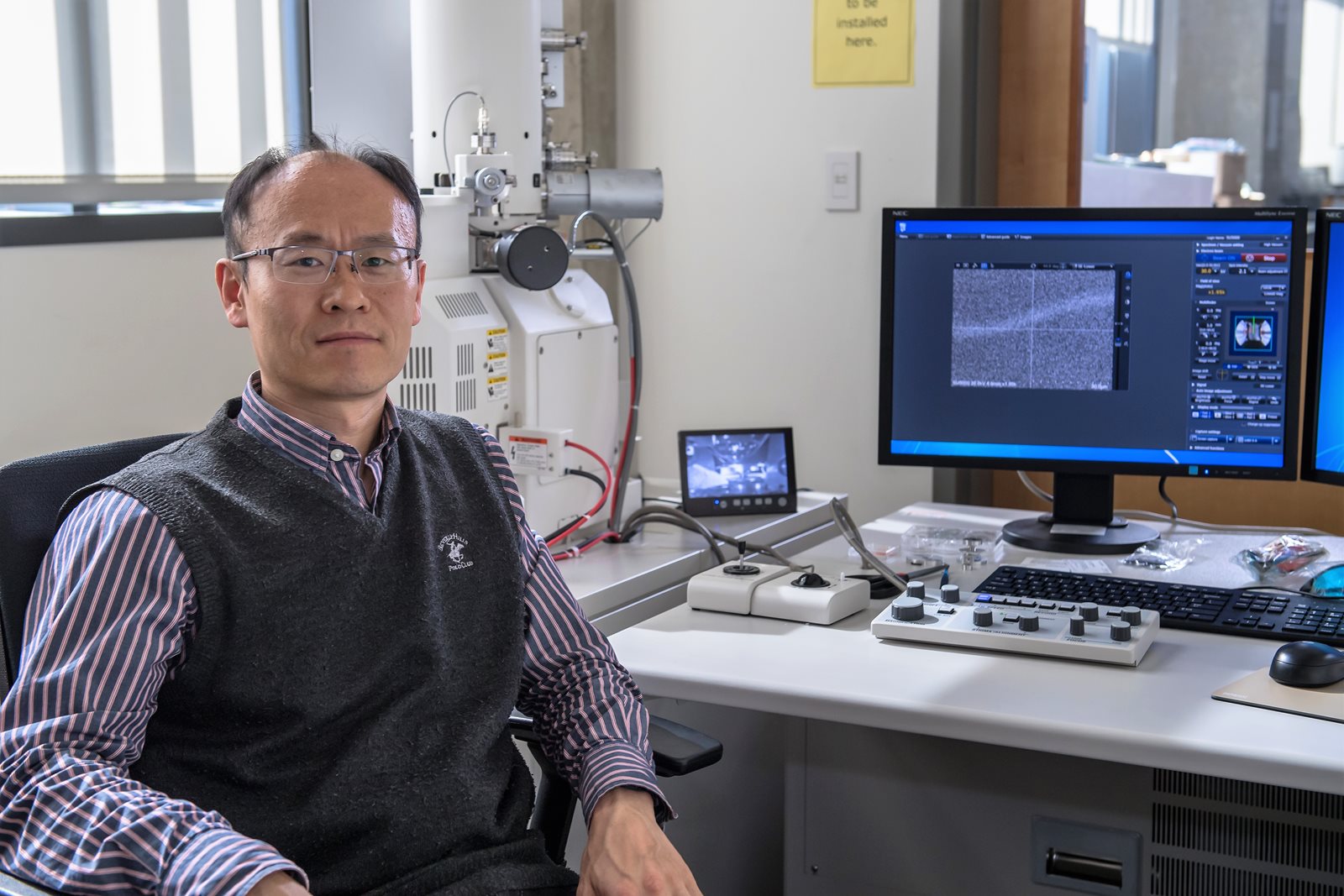
In addition to Steward, Choi is training four other research assistants on the scanning electron microscope. Previously, they had to travel to the Seattle campus to use one. Eventually, UW Bothell undergraduates will also be able to use the microscope after training, which takes about a month, he said.
“Now that we have this instrument a lot of students will use it for research and development,“ Choi said.
Other faculty members planning to use the microscope include Hung Cao in electrical engineering, John Bridge and Cassandra Wright in mechanical engineering, and Kristina Hillesland in biology. Choi also has heard from a local company that would pay for a turn at a scanning electron microscope at UW Bothell.


